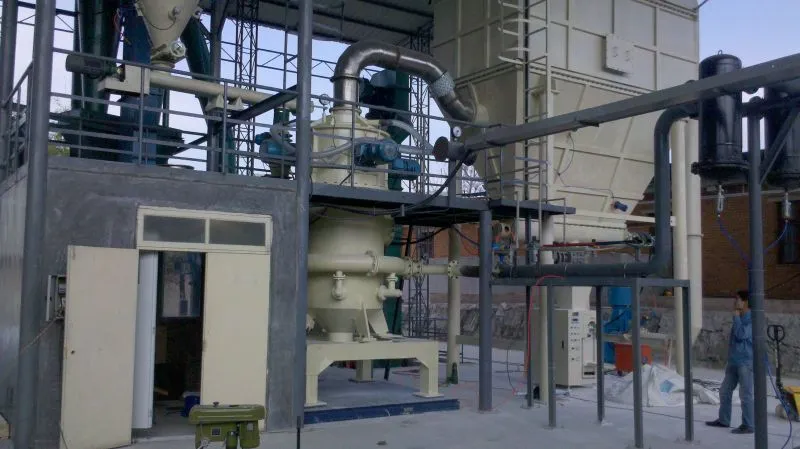A talc jet mill project processes talc, a mineral made of magnesium silicate. The goal is to create fine particles for different industrial uses. Here’s a general overview of the steps and considerations involved in such a project:

Project Overview
Objective:
– Produce ultra-fine talc powder with a jet milling process. This powder is useful in cosmetics, pharmaceuticals, plastics, paper, and more.
Technology:
– Jet Milling: This process uses fast air or steam to speed up particles. They collide with each other, which reduces their size. The result is a very fine powder with a controlled particle size distribution.
Key Steps in the Project
Design and Engineering:
– Create the layout for the jet milling plant. Include the milling system, air compressors, classifiers, and packaging systems.
– Considerations for dust collection and environmental controls to minimize emissions.
Equipment Selection:
– Choose appropriate jet mill machines (e.g., fluidized bed jet mills) based on desired particle size and production capacity.
– Select ancillary equipment such as air compressors, classifiers, and storage systems.
Process Optimization:
– Conduct trials to optimize milling parameters (pressure, feed rate, and air flow).
– Adjust operational parameters to achieve the desired particle size and quality.
Quality Control:
– Implement quality control measures to test the talc powder for particle size, purity, and other relevant properties.
– Ensure compliance with industry standards and regulations.
Environmental and Safety Considerations:
– Do an environmental impact assessment to find possible effects on the area around it.
– Use safety measures for workers, like dust control and personal protective equipment (PPE).
Production and Scaling:
– Begin production with a pilot run to validate the process.
– Scale up to full production based on initial results and market demand.
Continuous Improvement:
– Monitor production efficiency and quality.
– Gather feedback from customers and adjust processes as necessary.
Challenges to Consider
– Regulatory Compliance: Make sure the talc product follows all rules for its uses, especially in sensitive areas like cosmetics and pharmaceuticals.
– Market Competition: Analyze competitors and market trends to position the product effectively.
– Supply Chain Management: Secure a reliable supply chain for raw materials and equipment.
– Cost Management: Monitor operational costs to maintain profitability.
A talc jet mill crushing project can be profitable. To succeed, focus on planning, choosing the right technology, and developing a strong market strategy. Focusing on quality, efficiency, and compliance helps the project serve different industries. It also supports sustainable practices.
